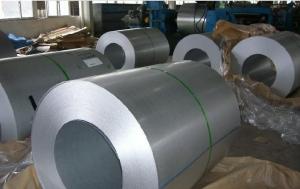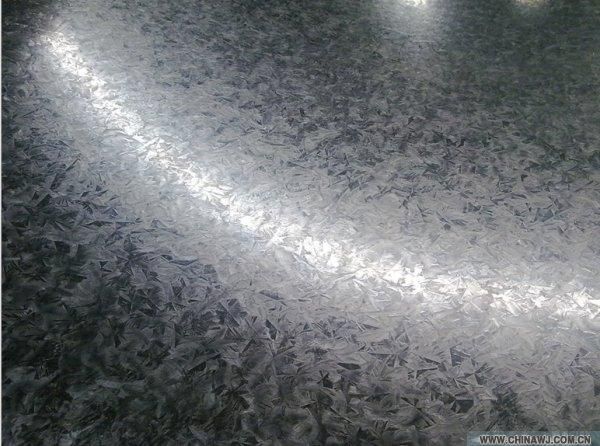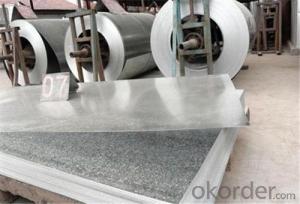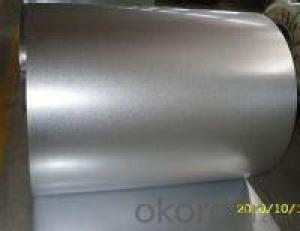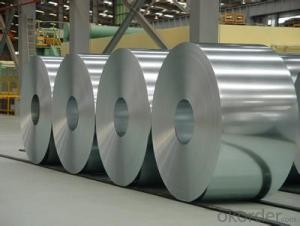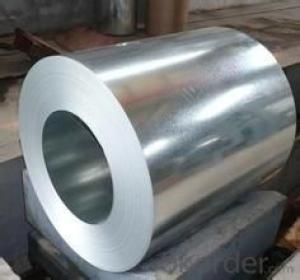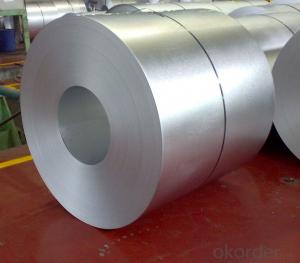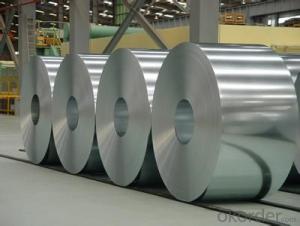Hot-dip Aluzinc Steel Building Roof Walls with Low Price-Good Quality
- Loading Port:
- China main port
- Payment Terms:
- TT OR LC
- Min Order Qty:
- 50 m.t.
- Supply Capability:
- 10000 m.t./month
OKorder Service Pledge
OKorder Financial Service
You Might Also Like
Hot-dip Aluzinc Steel Building Roof Walls with Low Price-Good Quality
1. Description of Hot-dip Aluzinc Steel Building Roof Walls with Low Price-Good Quality:
Hot-dip aluzinc steel structure is composed of aluminum-zinc alloy, consisting of 55% aluminum, 43% zinc and 2% at 600 ℃ silicon solidification temperature and composition, the entire structure is made of aluminum - iron - silicon - zinc, to form a dense quaternary crystals an alloy.
Hot-dip aluzinc steel has many excellent features: strong corrosion resistance, is three times the pure galvanized sheet; zinc surface with beautiful flowers, can be used as a building outside board.
Applications of hot-dip aluzinc steel:
1)Building: roof, walls, garages, soundproof walls, pipes and modular housing.
2)Automotive: muffler, exhaust pipes, wiper accessories, fuel tank, truck boxes, etc.
3)Farm: barn, sheds, silos, piping and other greenhouse.
2.Main Features :
• Excellent corrosion resistance
• Good manufacturability
•Surface coating
•Cost-effective
3.Hot-dip Aluzinc Steel Images:

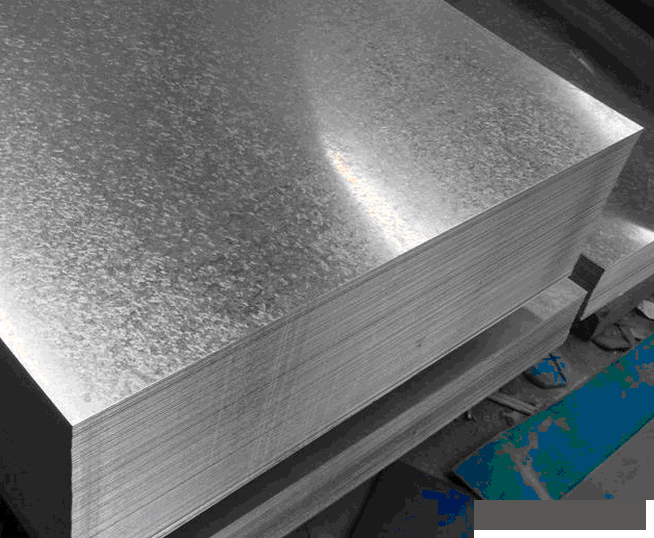
4.Hot-dip Aluzinc Steel Specification :
AVAILABLE SPECIFICATION
HOT-DIP ALUZINC STEEL COILS | |
THICKNESS | 0.16mm-3.5mm |
WIDTH | 1250mm MAX |
COATING MASS | 30g/ m2-185 g/ m2 |
SPANGLE | Regular Spangle, Minimized Spangle, Zero Spangle |
SURFACE TREATMENT | Chromated / non-chromated, Oiled / non-oiled, Anti Finger Print |
COIL INNER DIAMETER | 508mm or 610mm |
5.FAQ Hot-dip Aluzinc Steel Building Roof Walls with Low Price-Good Quality:
We have organized several common questions for our clients,may help you sincerely:
1.What advantages does your company have?
Cement : Annual capacity of 400 million tons, No. 1 in the world
Fiberglass: Annual capacity of 1 million tons fiberglass, No. 1 in the world.
Refractory Material: Annual capacity of 40,000 tons casting refractory, No.1 in the world.
2.What advantages do your products have?
Firstly, our base material is of high quality, Their performance is in smooth and flat surface,no edge wave ,good flexibility.
Secondly, high quality zinc ingoats, 97.5% zinc,1.5% silicon,1% others, the same zinc coating measured by metal coating thickness or by zinc weight
Thirdly, high precision: Tolerance strictly according to ASTM or JISG standard even more rigid.
- Q: What are the different types of coil edge trimming machines?
- There are several different types of coil edge trimming machines available in the market. These machines are specifically designed to trim the edges of coils or rolls of various materials such as metal, paper, plastic, or fabric. Each type of machine has its own unique features and capabilities, catering to different trimming requirements. 1. Manual Edge Trimmers: These machines are operated manually, where an operator manually feeds the coil and trims the edges using a cutting tool or blade. Manual edge trimmers are typically used for low volume trimming applications and require the operator's skill and precision. 2. Semi-automatic Edge Trimmers: These machines have automated feeding mechanisms that assist in feeding the coil through the machine. The trimming process is still performed manually by the operator using a cutting tool, but the feeding mechanism reduces manual effort and increases productivity. 3. Automatic Edge Trimmers: These machines are fully automated and require minimal operator intervention. They are equipped with advanced sensors and controls that enable precise and consistent trimming of coil edges. Automatic edge trimmers can handle high volumes of coils and are often integrated into production lines for continuous trimming operations. 4. Rotary Blade Edge Trimmers: These machines utilize rotary blades to trim the edges of coils. The rotary blades rotate at high speeds, cutting through the material with precision. Rotary blade edge trimmers are commonly used for plastic or fabric coils, as they provide clean and smooth cuts. 5. Guillotine Edge Trimmers: These machines use a guillotine-like cutting mechanism to trim the edges of coils. The cutting blade moves vertically and cuts through the coil material in a straight line. Guillotine edge trimmers are suitable for trimming metal or paper coils, as they provide straight and accurate cuts. 6. Laser Edge Trimmers: These machines use laser technology to trim coil edges. The laser beam precisely cuts through the material, resulting in clean and precise edges. Laser edge trimmers are often used for delicate or high-value materials, as they minimize the risk of damage or distortion. Each type of coil edge trimming machine has its own advantages and limitations, and the choice of machine depends on the specific requirements of the application. Factors such as material type, coil dimensions, trimming precision, and production volume should be considered when selecting the appropriate machine.
- Q: i'm looking into buying a stainless steel ring for somebody as a gift.i'm on a budget (heh) and the ring is about $50.will it rust or tarnish? it'd be embarrassing if i gave it to someone, and it begins rusting :Pthanks
- Stainless steel is a generic term for a huge variety of different alloys. In manufacturing, each steel has different numbers, etc that they go by. Some steel sold as being stainless actually is not. It rusts, like the cheap kitchen knives you see that are left in the sink too long. However, the stainless in jewelry is pretty legit. Overpriced, but legit. It will not tarnish, but it won't stay shiny forever. It might get a little less glossy over time. When it does get re-polished, it takes a long time to do it. But it will not turn black or rust. Good luck.
- Q: Which is more reactive? Zinc or Steel? And why?
- Zinc. Steel is an alloy consisting mostly out of iron, In the reactivity seris, zinc is more reactive than iron. Therefore, zinc is more reactive than steel
- Q: I want to get a new knife but i cant decide if i wan a spyderco pacific salt or a cold steel ak47
- What exactly are you using it for? Personally I would go with Cold Steel AK47. It's a good all around knife for hunting, combat, stabbing and slashing as well as everyday use. Well balanced tip and very little bladeplay which can be a problem with a cheaper knife. Both are good companies but the CS AK47 wins hands down for me.
- Q: What are the dimensions of steel coils used in bridge construction?
- The dimensions of steel coils used in bridge construction can vary depending on the specific requirements of the bridge project. However, generally speaking, the dimensions of steel coils used in bridge construction typically range from 0.5 inches to 1 inch in thickness and 36 inches to 72 inches in width. The length of the coils can vary as well, but is commonly around 20 to 40 feet. These dimensions allow for the fabrication of various structural components such as beams, columns, and plates that are essential for the construction of bridges. It is important to note that the dimensions may vary based on the specific design and engineering specifications of the bridge project, as well as the type and load capacity of the bridge being constructed.
- Q: What are the different types of coatings applied to steel coils?
- There are various types of coatings that can be applied to steel coils, each with its own specific purpose and benefits. 1. Galvanized Coating: This is one of the most common types of coatings applied to steel coils. It involves the application of a layer of zinc to the steel surface. Galvanized coatings provide excellent corrosion resistance, making them suitable for outdoor applications where the steel may be exposed to moisture or harsh environmental conditions. 2. Galvalume Coating: Similar to galvanized coating, galvalume coating also involves the application of a layer of zinc to the steel surface. However, it also includes a small amount of aluminum, which enhances the corrosion resistance and provides better heat reflectivity. Galvalume coatings are often used in roofing and cladding applications. 3. Pre-painted Coating: Pre-painted coatings involve the application of a layer of paint or primer to the steel surface. This type of coating allows for customization in terms of color and finish. Pre-painted coatings not only enhance the aesthetics of the steel but also provide additional protection against corrosion and weathering. 4. Organic Coating: Organic coatings are typically applied as a topcoat over a galvanized or galvalume coating. They are made of various resins, such as polyester, epoxy, or polyurethane, which provide additional protection against corrosion, abrasion, and chemicals. Organic coatings are commonly used in applications where both aesthetics and durability are important, such as in the automotive industry. 5. Metallic Coating: Metallic coatings, such as aluminum or zinc, are applied to steel coils using a process called hot-dip coating. These coatings provide excellent corrosion resistance and are commonly used in applications where the steel is exposed to high temperatures or corrosive environments. 6. Chromate Conversion Coating: Chromate conversion coatings are applied to steel coils primarily for their corrosion resistance properties. They are commonly used in electrical applications to protect against galvanic corrosion and improve conductivity. Overall, the type of coating applied to steel coils depends on the specific requirements of the application, including the desired level of corrosion resistance, aesthetics, and environmental factors.
- Q: Can steel coils be cut to length?
- Yes, steel coils can be cut to length.
- Q: What are the different methods of surface inspection for steel coils?
- Some of the different methods of surface inspection for steel coils include visual inspection, magnetic particle inspection, dye penetrant inspection, eddy current inspection, and ultrasonic inspection.
- Q: What is the difference between a steel strip and a coil? The steel strip is flat steel, and the steel coil is made of steel. Is that correct?
- A steel strip is a steel strip of relative range, and can be called a steel strip when the width is less than 1000.
- Q: Im looking at some knives and am wandering if they use good steel one is this case knife and its 54 dollars Do they use good steel or not Iv never had a good experience with Case but am wandering if they use good steel now? if you all have any other recommendations let me hear them I got my Selection from here so any others wont hurt. so basic break down does case use good steel know?
- Case knives are top quality in workmanship. Many have collectors vlaue. I once found an antique four-bladed Case knife is a school yard that had a bone handle. There are basically three types of knives purchased by those who purchase them for practical uses: Pocket knives, made principally for whittling and gneral light use Lock bladed knives Sheath knives I'm not including such novleties as switchblades or throwing knives The latter two types of knives are designed more for outdoor use. Typically they are more duarble and have high quality steel that enables the knife to hold an edge for a longer period of time than a knife made of softer steel. Pocket knives, by contrast, have smaller, thinner blades. Moreover, their steel tends to be a little softer. Comparable brands to Case would include Boker, Old- Timer and Uncle Henry (both Schrade-Walden tradenames), Camillus and others. Overall, I think you would be pleased with a Case knife. Their quality certainly exceeds such brands as Imperial or Queen.
Send your message to us
Hot-dip Aluzinc Steel Building Roof Walls with Low Price-Good Quality
- Loading Port:
- China main port
- Payment Terms:
- TT OR LC
- Min Order Qty:
- 50 m.t.
- Supply Capability:
- 10000 m.t./month
OKorder Service Pledge
OKorder Financial Service
Similar products
Hot products
Hot Searches
Related keywords
